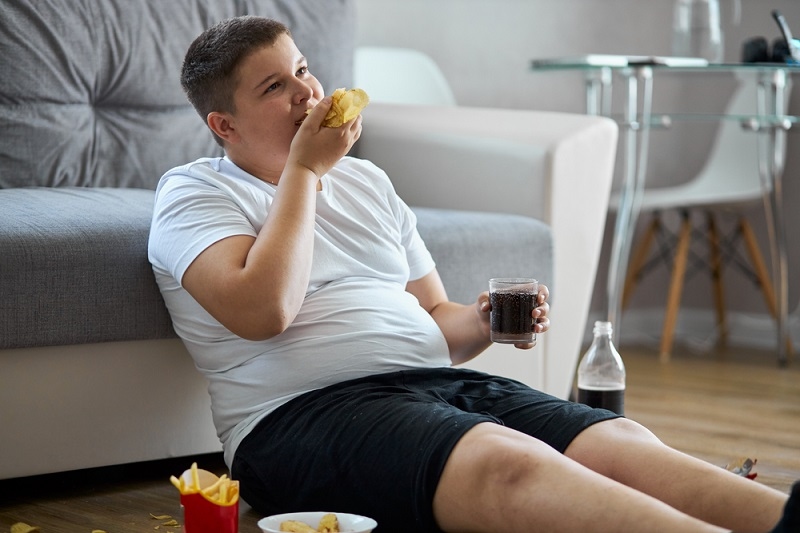
Childhood obesity has become one of the most serious health challenges today. The numbers keep rising, and the consequences go far beyond just being overweight. To tackle it effectively, we first need to understand what causes childhood obesity, and that means looking at the problem from every angle — lifestyle, environment, genetics, and more.
This article breaks down 10 causes of childhood obesity, explains the factors that cause childhood obesity, and outline practical steps on how to prevent childhood obesity. If you want real change, understanding the root causes is the first step.
Obesity in childhood is not only about weight. It is measured by using BMI, an index adjusted for age and sex. Children in the 95th percentile and above are considered obese. But BMI does not tell the whole story. Things like lifestyle, diet, activity level, and family history greatly contribute. So when we think about causes of childhood obesity, we look at behavioral, biological, and environmental factors that may have the children-pushing factor into obesity.
Must Read: Tips For Implementing a Low-Carb Diet Safely for Kids

The 10 main causes of childhood obesity are supported by research or observation:
Simply put, one makes an attempt to eat more calories than those burned. If children consistently eat high-calorie foods, snacks, or sugary beverages, the rise in weight is almost inevitable. Energy imbalance lies at the core of childhood obesity cause and acts as a starting point practically for every other reason.
These are not the same calories. Diets consisting mainly of processed foods and fried snacks, sugar-laced drinks, and fast foods contribute directly to obesity. Larger portion sizes without breaks for snacking, not to mention mindless eating while staring at digital screens.These are some of the main childhood obesity causes in everyday life.
Being active is something children are ever less apt to find time for these days. Sedentary lifestyles waste away precious energy, hours spent in idle TV, or time spent on an iPhone or computer. Such lifestyles, suppose they want to foster an active lifestyle at least 60 minutes per day, can negate most of the intrinsic reasons for childhood obesity, but the average kid malpractices the prescription.
Too much screen time is not sedentary in its inefficacy, for it increases exposure to food ads, often marketing unhealthy products. Ads prod one into craving and such prolonged sitting incapacitates calorie burning. Excess screen time is among the 10 less talked-about causes of childhood obesity.
In some kids, there can be a genetic predisposition toward obesity. Genes affect metabolism, appetite, and storage of fats. Others do exert influence toward obesity due to hormonal conditions such as hypothyroidism or abnormalities with cortisol. It is false that genetics alone defines obesity; however, genetics is among the factors that define childhood obesity.
Certain medications have the side effect of activating rapid weight gain in kids. Steroids, antidepressants, antipsychotics, as well as some drugs to control seizures, cause weight gain. Being aware of this is essential when evaluating childhood obesity causes.
Children absorb habits from their households. Children are likely to follow if parents have poor diets or limited activity. A home full of sugary snacks or limited healthy options makes obesity more likely. Family habits are a big chunk of the causes of childhood obesity.
Whether the neighborhood is safe, parks, grocery stores, and fresh foods are available, are all interesting factors related to obesity. Kids who live in food deserts or unsafe areas often find their opportunities to exercise or eat healthily shut down. Those external attributes are the causes of severe childhood obesity.
A lack of sleep disrupts hunger hormones and increases cravings for high-calorie foods. Sleep-deprived children overeat more and put on more weight. It is yet another invisible but highly potent factor among the 10 reasons for childhood obesity.
Stress, anxiety, depression, or bullying can lead to emotional eating. Kids often turn to food for comfort, and chronic stress affects metabolism. Emotional problems are much less obvious, but they rank among some of the main causes that lead to childhood obesity.
Explore More: Top Choices of Food For Brain Development Of 6 Month Baby
The effects of childhood obesity are serious and far-reaching:
Knowing these effects of childhood obesity will plainly indicate how important early intervention is.
Knowing how to prevent childhood obesity is as important as learning its causes. It goes as follows:
Children are significantly less likely to endure the impacts of childhood obesity when parents, schools, and communities come together.
Don’t Miss: Seasonal Health Tips for Kids Facing Issues Around The Year
A specific factor cannot be attributed to childhood obesity. The 10 identified causes of childhood obesity interact with each other and require an integrated approach. Once connected to diet and activity, some are genetics, sleep, and emotional well-being, with the reasons being multiple, thus calling for a broad approach to tackling obesity.
We can afford children with health, confidence, and future by understanding child obesity-causal factors, recognizing situations that cause childhood obesity, and applying actual measures on how to prevent childhood obesity.
This is not easy, but it is still possible. Healthy habits are established at home, passent reinforced at school, and within the community, and every little step counts in lessening childhood obesity and its lifelong consequences.
This content was created by AI